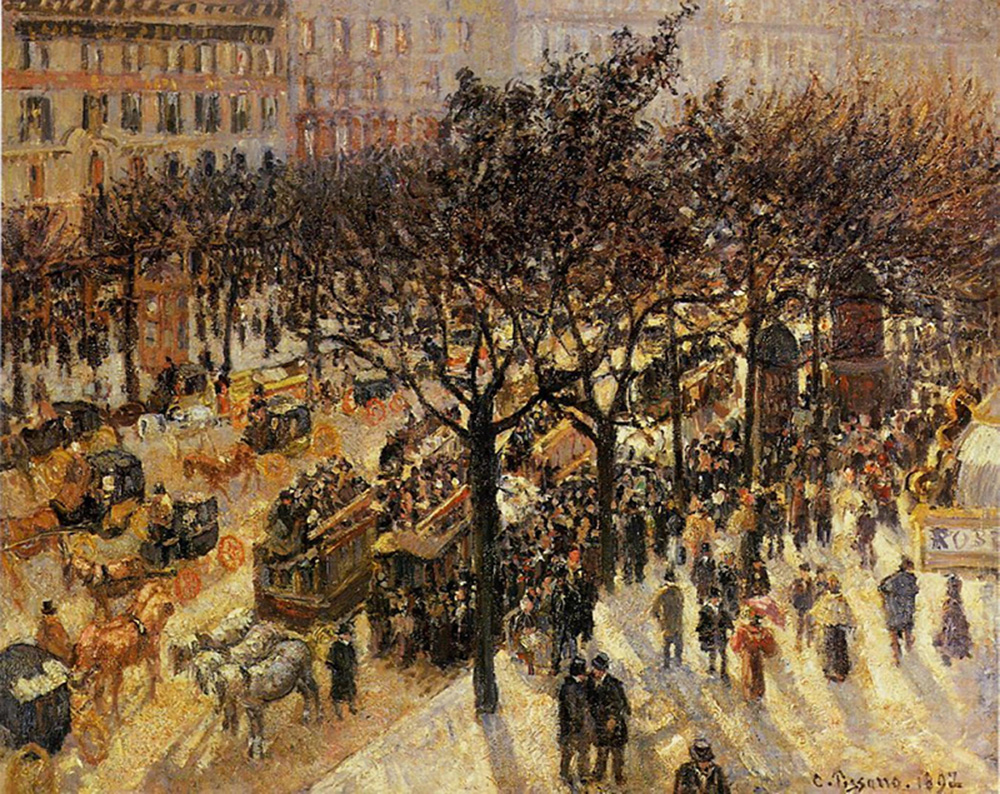Pissarro Captures the Boulevard des Italiens
Camille Pissarro, primarily a painter of rural life, produced very few city scenes
before the 1890s, when he painted several series of streetscapes in Paris and elsewhere. He wrote his son Lucien in 1897: “I have engaged a large room at the Grand Hôtel de Russie, 1 rue Drouot, from which I can see the whole sweep of the boulevards.” He could look left onto the boulevard Montmartre or turn right toward the boulevard des Italiens. The two streets were at the western end of Paris’ grands boulevards, a linked chain of avenues that arcs from La Madeleine along the line of the city’s medieval fortifications. In the late 1800s, the grands boulevards formed the prosperous heart of Paris. According to a count taken in 1881, twenty thousand vehicles traveled the boulevard des Italiens each day, rolling past the Opéra, expensive shops, fine restaurants, and cafés like the celebrated Café Tortoni, which drew le tout Paris (the city’s elite) and was a favorite of Manet.
Between mid-February and mid-April, Pissarro painted two views of the boulevard des Italiens (he made far more of the boulevard Montmartre). He worked in the morning, as the sun just broke over buildings to fall on the pavement at the lower right. Working two hours at a stretch, he seems to have been most intent on capturing the busy movement of urban life. His overhead view, angled perspective, and abrupt cropping on all four sides suggest an energy and ceaseless activity that extends beyond the frame. Rapid, abbreviated brushstrokes give the blurred effect of objects caught in motion.
Pissarro’s crowded streetscape illustrates several familiar features of late nineteenthcentury Paris. The large two-story omnibuses, pulled by two- or three-horse teams, seated up to forty passengers and were fixtures of the avenues after their introduction in 1855. Supplemented by trams and cabs for hire, they made it relatively easy for Parisians to travel across the city, even before the opening of the Métro in 1900. Omnibuses were one of the places where different levels of society mingled—though all riders were warned to guard against pickpockets.
Named after the advertising agency that had the exclusive contract for them, greendomed Morris columns were also ubiquitous. For viewers today these kiosks are instantly evocative of Paris. Plastered with posters for theatrical and other events, they were an important means of communication.
Also visible in Pissarro’s painting are large plate-glass shop windows at street level. The technology to manufacture such large panes had not existed before 1850 or so. Now, with expanded gas and electric lighting, they produced glittering displays that were yet another attraction of the grands boulevards.

Camille Pissarro, Boulevard des Italiens Afternoon (1897)